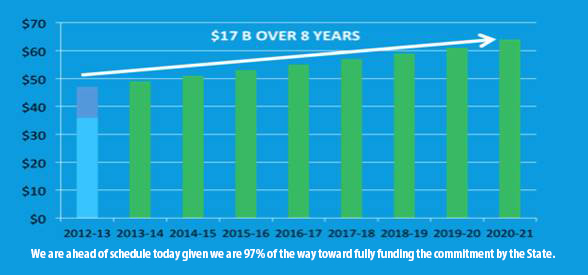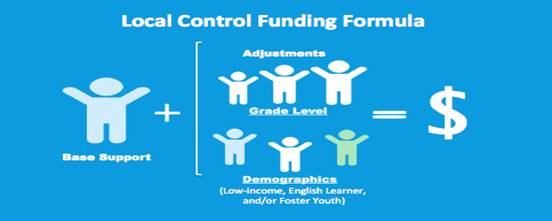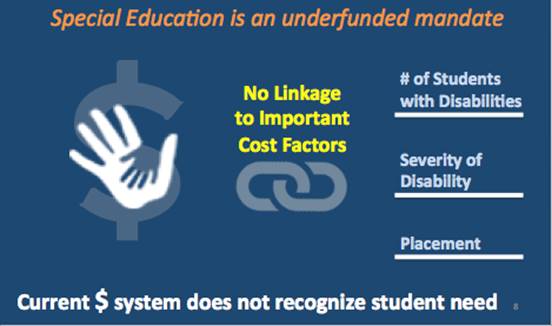|
2) Increases in state education funding are expected to slow in the years ahead
The Local Control Funding Formula (LCFF) was enacted in 2013-14, replacing the school funding model that had been in place for approximately 40 years. School districts receive funding for each student, with additional revenue to help meet the educational needs of low-income students, English-learners and foster youth. Districts must submit a plan outlining how the money will be spent to serve the needs of the students generating the funds.
LCFF is designed to gradually restore revenue levels to those allocated in 2007-08, when the recession decimated education funding. LCFF is set to be fully implemented in 2021.


The initial proposal for LCFF would have provided additional funding for special education students, whose state- and federally-mandated services are among the costliest for districts to provide. However, this funding was not included in the final version of LCFF. This has had a significant impact on L.A. Unified, which serves a large number of special-education students, many of whom are English-learners or socioeconomically disadvantaged. As a result, general fund resources must be allocated to provide the programs and services that are essential to our special education students.


|











